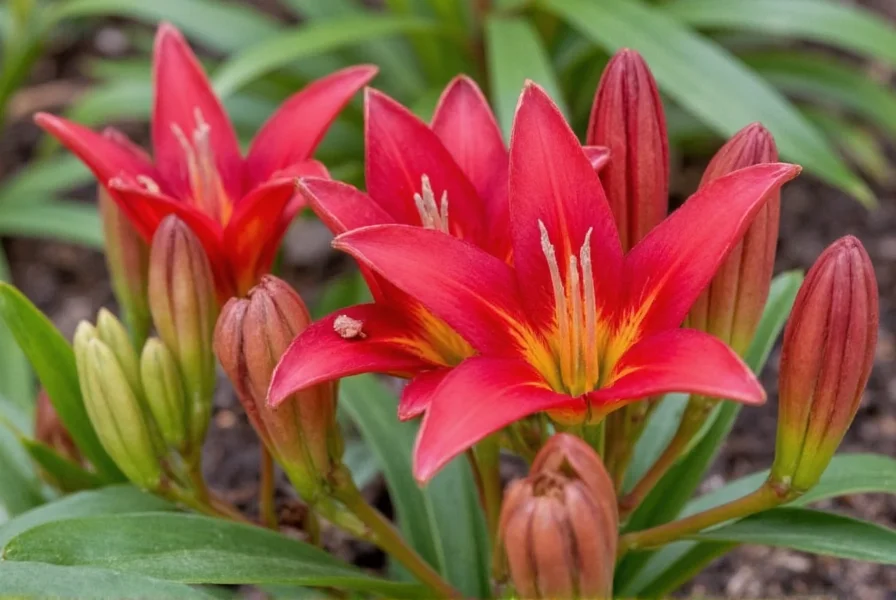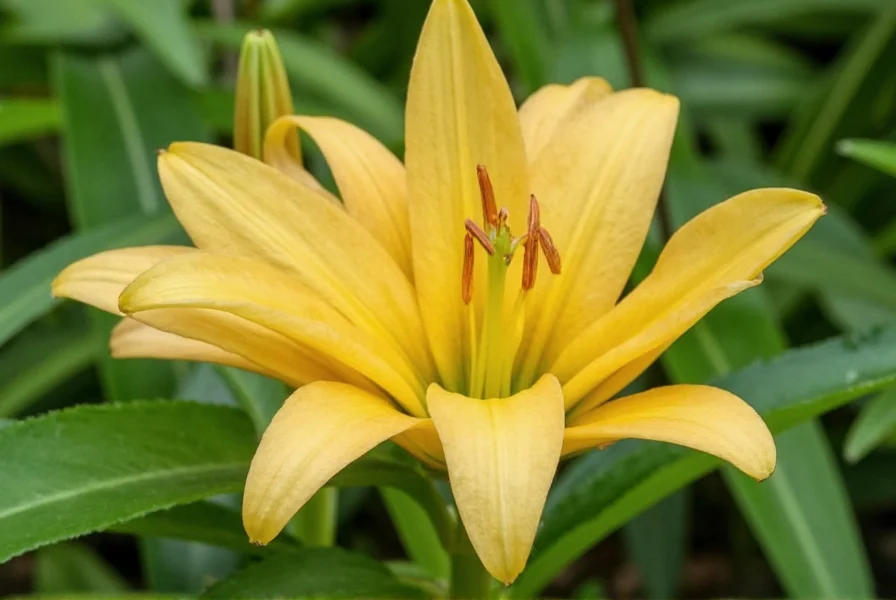Understanding the distinction between ginger lily and true ginger is essential for gardeners and plant enthusiasts. While both grow from rhizomes and belong to the Zingiberaceae family, they serve different purposes in cultivation and use. Ginger lilies (Hedychium species) are prized for their beautiful, fragrant blooms and tropical appearance, whereas true ginger (Zingiber officinale) is cultivated for its culinary and medicinal rhizomes.
Botanical Classification and Characteristics
Ginger lilies belong to the Hedychium genus, which contains approximately 60 species. The most widely recognized variety is Hedychium coronarium, commonly called white ginger lily or garland flower. These plants feature:
- Large, lance-shaped leaves growing in two rows along the stem
- Prominent, showy flowers that often emit a sweet fragrance
- Rhizomes that spread horizontally beneath the soil surface
- Tropical growth habit requiring warm temperatures
Unlike true ginger, which produces small, insignificant flowers, ginger lilies are primarily grown for their ornamental value. Their blooms typically appear in late summer to fall, creating a dramatic visual impact in suitable climates.
| Feature | Ginger Lily (Hedychium) | True Ginger (Zingiber officinale) |
|---|---|---|
| Primary Use | Ornamental | Culinary/Medicinal |
| Flower Significance | Prominent, fragrant blooms | Small, insignificant flowers |
| Rhizome Flavor | Mild, not typically used in cooking | Strong, spicy flavor |
| Hardiness Zones | 8-11 (tropical/subtropical) | 9-12 (more sensitive) |
Growing Conditions and Care Requirements
Successfully cultivating ginger lilies requires understanding their specific environmental needs. These tropical plants thrive in conditions that mimic their native habitats across Asia and the Pacific islands.
For optimal growth when learning how to grow ginger lily plants, provide:
- Light: Partial shade to full sun (morning sun with afternoon shade is ideal in hotter climates)
- Soil: Rich, well-draining soil with high organic matter content
- Moisture: Consistently moist (but not waterlogged) soil, especially during active growth
- Temperature: Minimum 50°F (10°C), with optimal growth between 70-90°F (21-32°C)
- Fertilizer: Balanced fertilizer monthly during growing season
Ginger lilies spread through underground rhizomes, forming attractive clumps over time. In USDA zones 8-11, they can be grown as perennials, while gardeners in cooler climates may need to dig and store rhizomes over winter. When considering ginger lily care instructions, remember these plants require protection from strong winds that can damage their tall, slender stems.
Medicinal and Traditional Uses
While not as widely used medicinally as true ginger, certain ginger lily species have traditional applications in various cultures. It's important to note that ginger lily medicinal uses differ significantly from those of Zingiber officinale.
In traditional Ayurvedic and Chinese medicine systems, specific Hedychium species have been used for:
- Addressing minor skin irritations when applied topically
- Supporting respiratory health in traditional preparations
- Creating fragrant oils for aromatherapy purposes
However, scientific research on ginger lily's therapeutic properties remains limited compared to extensive studies on true ginger. When exploring is ginger lily edible questions, exercise caution—while some species have edible parts, others may cause digestive upset if consumed. The rhizomes of most ginger lily varieties lack the distinctive flavor of culinary ginger and are generally not recommended for cooking.
Common Varieties for Gardeners
Gardeners interested in adding ginger lilies to their landscapes have several attractive options to consider:
- Hedychium coronarium (White Ginger Lily): Features pure white, fragrant flowers and grows 6-8 feet tall
- Hedychium gardnerianum (Kahili Ginger): Produces yellow-orange flowers with a strong fragrance
- Hedychium coccineum (Red Ginger Lily): Showcases vibrant red-orange blooms
- Hedychium flavescens (Yellow Ginger Lily): Displays pale yellow flowers with a pleasant scent
Each variety has slightly different growing preferences, but all share the tropical nature and rhizomatous growth habit characteristic of the genus. When selecting the best conditions for ginger lily in your garden, consider the mature height of each variety to ensure proper placement.

Potential Challenges in Cultivation
While generally robust plants, ginger lilies can face certain challenges that affect their growth and appearance:
- Fungal diseases: Rhizome rot can occur in poorly draining soils
- Pests: Aphids and spider mites may occasionally infest plants
- Cold damage: Temperatures below 40°F (4°C) can damage foliage
- Invasive potential: Some species spread aggressively in ideal conditions
Preventative care represents the best approach to maintaining healthy ginger lilies. Ensure proper spacing to promote air circulation, avoid overhead watering to reduce fungal issues, and monitor plants regularly for early signs of pests. In regions where certain ginger lily species have become invasive, check local regulations before planting.
Conclusion
Ginger lilies offer gardeners a stunning tropical element with relatively straightforward care requirements. Understanding the difference between ginger lily and true ginger prevents confusion about their uses—these plants primarily serve ornamental purposes rather than culinary ones. By providing appropriate growing conditions and understanding their specific needs, gardeners can enjoy these beautiful, fragrant plants as striking additions to their landscapes.
Frequently Asked Questions
Is ginger lily the same as regular ginger?
No, ginger lily (Hedychium species) is not the same as regular culinary ginger (Zingiber officinale). While both belong to the Zingiberaceae family and grow from rhizomes, they serve different purposes. Ginger lilies are primarily ornamental plants grown for their beautiful, fragrant flowers, while true ginger is cultivated for its edible and medicinal rhizomes. The two plants have distinct botanical characteristics and uses.
Can you eat ginger lily rhizomes?
Ginger lily rhizomes are generally not recommended for culinary use. Unlike true ginger (Zingiber officinale), which has a distinctive spicy flavor, ginger lily rhizomes have a mild taste and lack the characteristic ginger flavor. Some species may cause digestive upset if consumed. While certain traditional medicine systems use specific Hedychium species medicinally, they should not be substituted for culinary ginger in recipes.
How do you care for ginger lilies in colder climates?
In colder climates (below USDA zone 8), ginger lilies require special winter care. Before the first frost, cut back the foliage to 2-3 inches above the soil. Carefully dig up the rhizomes, clean off excess soil, and allow them to dry for a few days. Store the rhizomes in a container filled with peat moss or vermiculite in a cool, dark location (50-60°F or 10-15°C). Check periodically for rot or drying out, misting lightly if needed. Replant outdoors after the last frost in spring when soil temperatures have warmed.
Do ginger lilies spread aggressively?
Some ginger lily species can spread aggressively through their rhizomes, particularly in ideal growing conditions. Hedychium gardnerianum (Kahili ginger) is considered invasive in several regions including Hawaii and New Zealand. To prevent excessive spreading, plant ginger lilies in containers or install underground barriers around garden plantings. Regular monitoring and division of clumps every 2-3 years can help manage their growth. Check with local agricultural authorities about invasive potential in your specific region before planting.
How much sun do ginger lilies need?
Ginger lilies prefer partial shade to full sun, with optimal growth occurring in locations that receive morning sun and afternoon shade, especially in warmer climates. In cooler regions (zones 8-9), they can tolerate more direct sunlight. Too much intense afternoon sun can scorch the leaves, while too little light may reduce flowering. The ideal light conditions represent one of the most important ginger lily care instructions for achieving abundant blooms.











 浙公网安备
33010002000092号
浙公网安备
33010002000092号 浙B2-20120091-4
浙B2-20120091-4